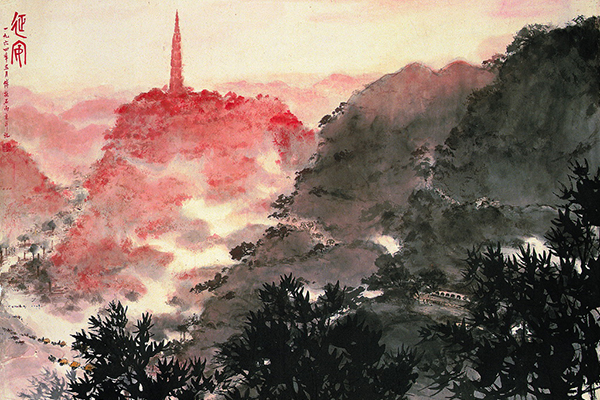
Yan’an, by Fu Baoshi, is on display in the Allow Me to Meticulously Depict the Land show in Beijing.[Photo/China Daily]
Though his late works reflect the “serving the people, serving politics” requirement for art after 1949, Fu Baoshi (1904-1965) retained a highly personal style. The signature “Baoshi wrinkle” strokes and dramatic composition make his paintings stand out among other works of his time.
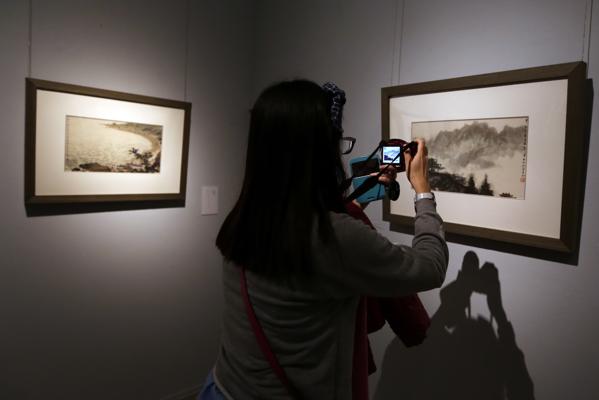
[Photo by Jiang Dong/China Daily
An exhibition now showing at the National Art Museum of China showcases Fu’s distinctive career as a modern master of Chinese landscapes, which parallels his remarkable portrayals of ancient figures. Some 80 paintings, drawn from the holdings of the Nanjing Museum, stand as testaments to how Fu incorporated Western painting skills to reform traditional ink-and-water in the nearly last two decades of his life.

The Xuanwu Lake in the Moonlight.[Photo/Provided to China Daily]
The show title, Allow Me to Meticulously Depict the Land, originates from a painting by the same name, from the NAMOC collection and included in the display.
The show navigates the painter’s path of transformation that included six fruitful art travels from the 1950s to ‘60s. He achieved breakthroughs in expanding traditional brush skills; he also built up an individualist vocabulary of imagery under the special political conditions at that time.
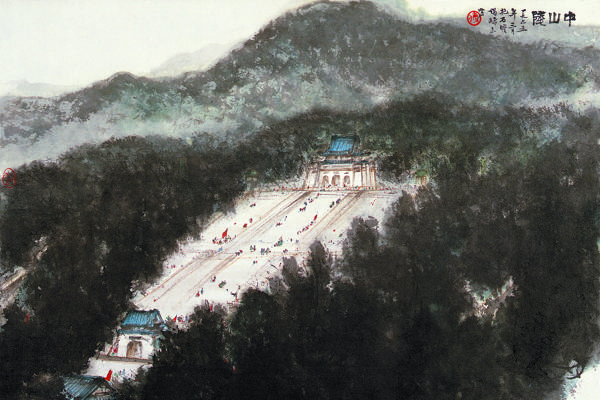
Sun Yat-sen Mausoleum.[Photo/Provided to China Daily]
The Xuanwu Lake in the Moonlight represents Fu’s early efforts to modernize inking techniques. The work resulted from his sketching travels in the 1950s, covering areas neighboring Nanjing, Jiangsu province, where he resided for a couple of years and where scenery recurred as his favorite subject matter.
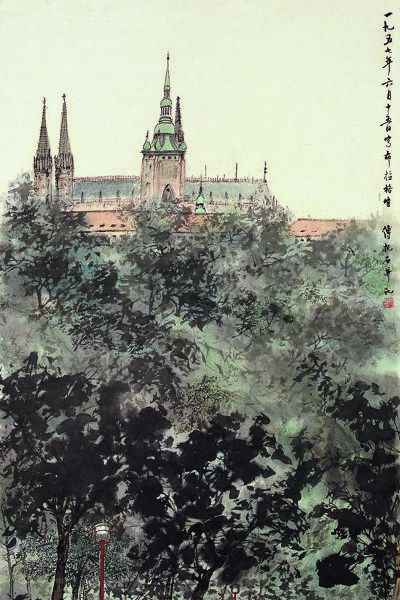
Prague Palace.[Photo/Provided to China Daily]
In this painting he lessened the usage of “cun” or “wrinkle” strokes and dabs, adopting instead watercolor techniques to create the forms. The result is a refreshing and moist texture that reflects the tranquillity on the lake at night.
He was further inspired to reform traditional rules during a visit to the communist countries in Eastern Europe, in 1957. He explored with a bold composition in the paintings from this trip, and Prague Palace is a refined example. He treated the trees at the forefront with simple, casual brush strokes, while the distant Gothic castle is lavishly and carefully depicted.

Springs.[Photo/Provided to China Daily]
He was so taken by the architecture of grandeur that he did two sketchings of Prague Palace. During the trip he also enriched his perspectives of observing nature and his creative approaches to traditional landscapes. He became a pioneer in portraying foreign scenery by taking the advantages of Chinese painting materials.
People are most familiar with Such Is the Beauty of Our Rivers and Mountains, a panoramic landscape Fu completed with painter Guan Shanyue for the 10th anniversary of the founding of the People’s Republic of China.
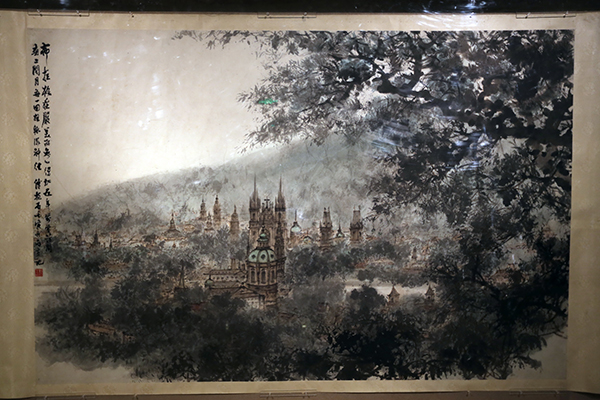
[Photo/China Daily]
The displayed work Yan’an shows the audience how Fu dealt with revolutionary motifs based on a four-day’s journey in 1960.
The painting encompasses a variety of subjects in well-arranged layers. The fleets of farmers and rows of cave houses look like dots hidden in the mountain ranges; the viewer’s eyes, meanwhile, are directed to the landmark pagoda at the back, which points into the sky like a sword. The painter enhanced the Red theme with a glowing red sky. He also added small red flags to such paintings on show as Sun Yat-sen Mausoleum and Shaoshan Mountain.
“Fu achieved his great success in exploring new themes (of traditional landscapes) during these important art trips. And he pushed forward the practice of ink-and-water to a new boundary,” says Gong Liang, director of the Nanjing Museum, which houses more than 380 pieces of Fu’s oeuvre.
“The reforms he initiated in interpreting images and expressing personal aesthetics keep enlightening artists today.”
If you go
9 am-5 pm, daily until Jan 28. National Art Museum of China, 1 Wusi Dajie (Street), Dongcheng district, Beijing. 010-6400-1476.

[Photo by Jiang Dong/China Daily]
